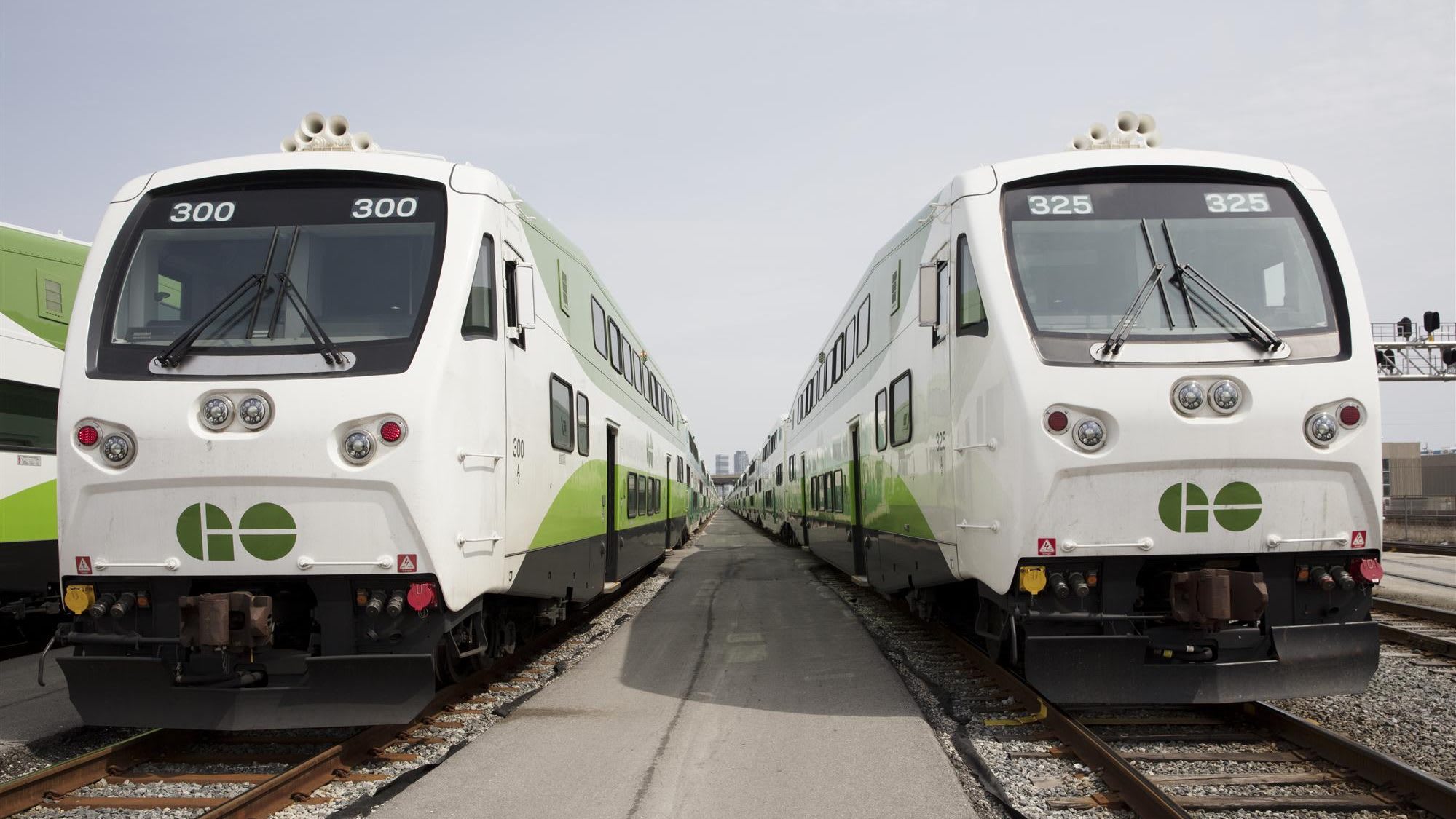New video GOes behind the scenes with early morning train crew
Metrolinx News takes you behind the scenes to showcase what goes into moving customers each day.
Apr 26, 2022
The time is 3:58 a.m.
It’s before most people even think about getting up, but the arrival time for some of the train operating crews at GO Transit’s Willowbrook Rail Maintenance Facility.
The crew consists of three members, two of which are the conductor (the train’s co-pilot) and the locomotive engineer (the train’s pilot). They are known informally as train ‘mates’ and work together as a team sometimes for weeks or even months.
The third member is the customer service ambassador (CSA) who operates the doors from the accessibility coach in the middle of the train. They’re also the voice behind the announcements on board and act as a responder in emergency situations.
Depending on the crew’s start time, they arrive at the crew centre about 30 to 45 minutes before they need to leave the train yard. In this case, we followed an early morning GO Train crew as they start their day.
Metrolinx News has condensed the process into a 3-minute video to give you a behind the scenes look at what goes into getting GO trains into service.
Want more info?
In case the video left you wanting more. Here’s more detail on how the crew preps the GO Train for departure.
The three-person crew start their shift with a job briefing. They go over the trip details, the track signals, and any other potential concerns along route (like construction or speed reductions). This is followed by important safety protocols before heading to the train yard.
This all takes about 10 minutes.
Once at the yard, the crew splits up – The conductor and locomotive engineer climb inside the locomotive while the CSA makes their way to the accessibility coach.
The crew begins with a radio call to the control centre, making sure they are on the right train and that they have clearance to depart.
Meanwhile, in the middle of the train the CSA does a radio test with the crew in the engine, checks the doors, and walks the train to ensure everything is ready to go. This includes making sure all the safety equipment is there (ramps, AED, stretcher, etc.) and that passenger assist alarm (that yellow strip near the windows) is working.
Crews are constantly working to keep the GO Transit fleet moving. (Metrolinx photo)
Back at the locomotive, the rest of the crew conducts a locomotive brake test before the conductor walks along both sides of the train, checking the braking system and performing a general inspection of each coach. Hand brakes, located inside various part of the train, are also released.
The crew also checks the cab car (the last car at the back of the train), the headlights, and the bell.
It takes about 20 to 30 minutes to complete all the inspections before the train is ready to depart.
So, while many of us are sleeping and the cold morning wind is howling, remember there are hard working transit crews getting trains – and people – moving.
by Nitish Bissonauth Metrolinx bilingual editorial content advisor, Scott Money Metrolinx editorial content manager
